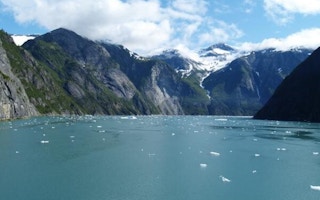As meteorologists forecast another dangerously warm year ahead, more data is in on just how hot the planet got over the last 18 months, with particularly dire news coming from the Arctic and the Himalayas.
Looking into its crystal ball for 2022, the United Kingdom’s Met Office is forecasting an average global temperature about 1.09°C above pre-industrial levels, Bloomberg Green reports. “While temperatures are expected to be slightly lower than in some years since 2015,” hitting 1.09°C will make 2022 the eighth year in a row in which global average temperatures have exceeded 1.0°C of warming.
The Met Office adds that the average masks the reality that parts of the planet are warming a good deal faster than the rest of the world, with the Arctic now seeing heating twice the global average.
The World Meteorological Organisation illustrated the trend with its confirmation that the Siberian town of Verkhoyansk hit a record-smashing 38°C on June 20, 2020, a temperature “more befitting the Mediterranean than the Arctic.” The UN agency is still taking the time and scientific rigour it needs to verify readings of 54.4°C posted in California’s Death Valley in 2020 and 2021, and 48.8°C in Sicily this past August, Bloomberg says.
Should the Sicily reading stand, it will be the hottest ever recorded in Europe.
“The WMO Archive of Weather and Climate Extremes has never had so many ongoing simultaneous investigations,” WMO Secretary-General Petteri Taalas said in a statement, and the extreme heating is not confined to the north polar regions: “In 2020, there was also a new temperature record (18.3°C) for the Antarctic continent.”
Expanding on the significance of Siberia’s exceedingly warm summer of 2020, which saw temperatures as high as 10°C above the norm most of the time, the WMO said the heat fueled forest fires and massive sea ice loss, while contributing significantly to 2020 being one of the three warmest years on record.
As scientists confirmed record summer heat at both poles over the past two years, Alaskans endured “record-shattering warmth” in December, reports the Washington Post, with temperatures as much as 45°F/25°C above average courtesy of a “heat dome” parked off the Aleutians.
Also notable: morning lows warmer than those normally experienced in the height of summer.
And because air can hold roughly 4 per cent more water for every degree it warms, the record-setting temperatures also meant record-setting precipitation — often in the form of rain. Fairbanks recorded its wettest December on record since 1929.
The rain falling on snow followed by overnight freezes wrought havoc on Alaska’s roads, covering pavement with ice the consistency of cement. Ice buildup on power lines also led to extended electricity outages throughout the Fairbanks area.
The Post says December’s winter rains came a month after a mammoth storm yielding one of the heaviest four-day rainfall totals ever observed in the state. It bucketed nearly 30 inches/76 centimetres of rain onto the fast-retreating Portage Glacier, 80 kilometres southeast of Anchorage.
“Parts of Alaska have warmed more than 2.5°F since the 1970s, outpacing the remainder of the Lower 48 by about two-thirds,” the news story states. The warming along Alaska’s North Slope, in particular, is placing “entire ecosystems at risk amid the abrupt biome and environmental shifts.”
December also brought devastating news about the Himalayas, with research published in the journal Scientific Reports affirming that glaciers there “have shrunk 10 times faster” over the past 40 years than they did during the previous 700.
The new research studied the integrity of some 15,000 ice sheets throughout a region that is often referred to as the “third pole” due to the amount of ice it holds, CNBC writes. The Himalayan glaciers “have lost about 40 per cent of their area in the last several hundred years, or an estimated 390 to 586 cubic kilometres of ice — enough to raise global sea levels 0.92 to 1.38 millimetres.” The report’s authors warned that the accelerating ice melt threatens water supplies and food security for millions of people in South Asia.
This story was published with permission from The Energy Mix.










